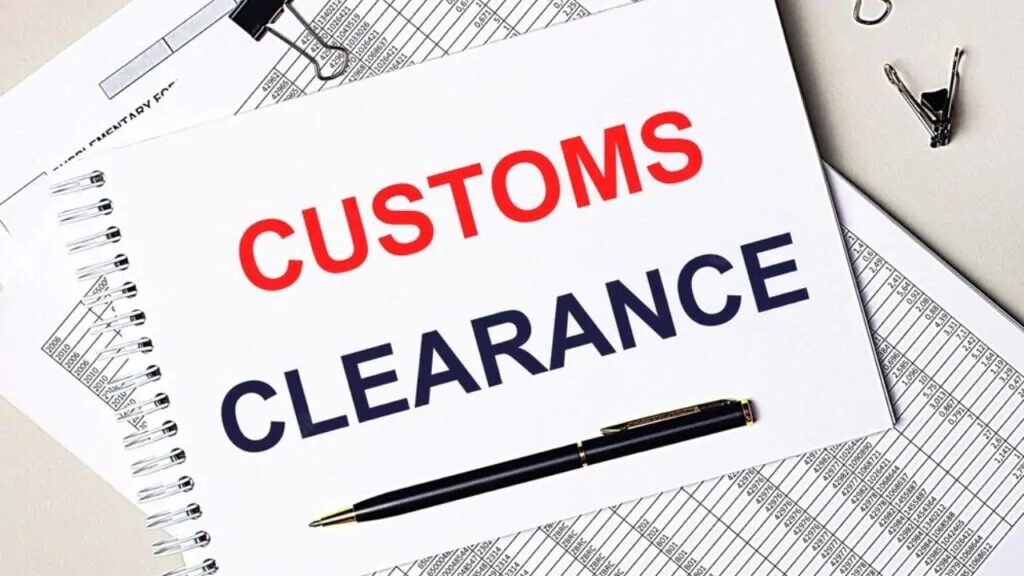If you are looking for a way to ship goods from China to Malta, you might be overwhelmed by the complexity and cost of international shipping. There are many factors to consider, such as the shipping method, the documents, the customs, the transit time, and the reliability of the shipping provider. In this article, we will guide you through the process of shipping from China to Malta and provide you with some tips to make it easier and smoother.
Understanding the logistics of international shipping

International shipping is the process of transporting goods across borders, usually by sea, air, or land. Depending on the origin and destination of the shipment, the logistics may involve different modes of transportation, such as trucks, trains, ships, planes, or courier services. Each mode of transportation has its own advantages and disadvantages, such as speed, cost, capacity, and environmental impact.
The logistics of international shipping also depend on the type and quantity of the goods being shipped, as well as the requirements of the destination country. Some goods may be subject to special regulations, restrictions, or taxes, depending on their nature, value, or origin. For example, some goods may be classified as dangerous, prohibited, or restricted, and may require special permits, licenses, or certificates to be shipped. Some goods may also be subject to import duties, taxes, or fees, depending on the tariff classification, the origin, and the value of the goods.
To ensure a smooth and successful international shipping, it is important to understand the logistics involved and plan ahead accordingly. You should also choose the right shipping method and provider for your needs, prepare the necessary documents and customs clearance, and track and manage your shipment until it reaches its destination.
Choosing the right shipping method for your needs

One of the most important decisions you need to make when shipping from China to Malta is the shipping method. There are mainly two options: sea freight and air freight. Each option has its own pros and cons, and you should weigh them carefully before making your choice.
Sea freight
Sea freight is the most common and economical way of shipping goods from China to Malta. Sea freight involves transporting goods by container ships across the ocean. Sea freight is suitable for large, heavy, or bulky items that are not time-sensitive, such as furniture, machinery, or raw materials.
The advantages of sea freight are:
- It is cheaper than air freight, especially for large volumes or weights.
- It has a lower environmental impact than air freight, as it emits less carbon dioxide and other greenhouse gases.
- It can handle almost any type of goods, regardless of size, shape, or weight.
The disadvantages of sea freight are:
- It is slower than air freight, as it can take several weeks or months to reach the destination.
- It is less reliable than air freight, as it can be affected by weather conditions, port congestion, or customs delays.
- It requires more paperwork and documentation than air freight, as it involves more parties and regulations.
Air freight
Air freight is the fastest and most convenient way of shipping goods from China to Malta. Air freight involves transporting goods by cargo planes across the sky. Air freight is suitable for small, light, or fragile items that are time-sensitive, such as electronics, clothing, or perishables.
The advantages of air freight are:
- It is faster than sea freight, as it can take only a few days or hours to reach the destination.
- It is more reliable than sea freight, as it is less affected by weather conditions, port congestion, or customs delays.
- It requires less paperwork and documentation than sea freight, as it involves fewer parties and regulations.
The disadvantages of air freight are:
- It is more expensive than sea freight, especially for large volumes or weights.
- It has a higher environmental impact than sea freight, as it emits more carbon dioxide and other greenhouse gases.
- It can handle only limited types of goods, depending on size, shape, or weight.
Documents and customs requirements for shipping from China to Malta

Another important aspect of shipping from China to Malta is the documents and customs requirements. Documents are the official papers that prove the identity, origin, value, and destination of the goods being shipped. Customs are the authorities that regulate the import and export of goods across borders. Documents and customs requirements vary depending on the type and quantity of the goods, the shipping method, and the destination country.
Some of the common documents and customs requirements for shipping from China to Malta are:
- Commercial invoice: A document that shows the details of the transaction, such as the seller, the buyer, the description, the quantity, the price, and the terms of payment and delivery of the goods.
- Packing list: A document that shows the details of the packaging, such as the number, the weight, the dimensions, and the contents of each package or container.
- Bill of lading (B/L) or air waybill (AWB): A document that shows the details of the shipment, such as the carrier, the consignor, the consignee, the origin, the destination, and the mode of transportation of the goods. It also serves as a contract of carriage and a receipt of delivery.
- Certificate of origin (CO): A document that shows the origin of the goods, such as the country or region where the goods were produced or manufactured. It may be required to determine the tariff classification, the import duty, or the preferential treatment of the goods.
- Import declaration: A document that shows the details of the import, such as the importer, the exporter, the description, the quantity, the value, and the tariff classification of the goods. It is used to calculate and pay the import duty, tax, or fee, and to obtain the import permit or license.
- Import permit or license: A document that shows the authorization to import certain types of goods, such as dangerous, prohibited, or restricted goods. It may be required to ensure the safety, security, or quality of the goods.
To prepare the documents and customs requirements for shipping from China to Malta, you should:
- Check the latest regulations and requirements of both countries, as they may change from time to time.
- Obtain the necessary documents and customs clearance from the relevant authorities or agencies, such as the customs, the trade, or the health departments.
- Provide accurate and complete information on the documents and customs declaration, and avoid any errors or discrepancies that may cause delays or penalties.
- Keep copies of the documents and customs clearance for your records and reference.
Calculating shipping costs and transit times

Another important aspect of shipping from China to Malta is the shipping costs and transit times. Shipping costs are the fees or charges that you need to pay for the transportation and delivery of your goods. Transit times are the durations or periods that it takes for your goods to reach their destination. Shipping costs and transit times depend on various factors, such as the shipping method, the distance, the weight, the volume, the value, and the destination of the goods.
To calculate the shipping costs and transit times for shipping from China to Malta, you should:
- Compare the different shipping methods and providers, and choose the one that best suits your needs and budget.
- Measure the weight and dimensions of your goods, and use the online calculators or tools provided by the shipping providers to estimate the shipping costs and transit times.
- Consider the additional costs and fees that may apply, such as the fuel surcharge, the insurance, the handling, the storage, or the customs duty, tax, or fee.
- Consider the possible delays or disruptions that may affect the shipping costs and transit times, such as the weather conditions, the port congestion, the customs clearance, or the holidays.
Finding reliable shipping providers and freight forwarders

Another important aspect of shipping from China to Malta is finding reliable shipping providers and freight forwarders. Shipping providers are the companies or organizations that offer the transportation and delivery services for your goods. Freight forwarders are the agents or intermediaries that help you arrange and manage the shipping process for your goods. Shipping providers and freight forwarders can help you save time, money, and hassle, as they have the expertise, experience, and network to handle the logistics of international shipping.
To find reliable shipping providers and freight forwarders for shipping from China to Malta, you should:
- Do some research and background check on the shipping providers and freight forwarders, and look for their credentials, reputation, and reviews.
- Ask for quotes and proposals from different shipping providers and freight forwarders, and compare their prices, services, and terms and conditions.
- Choose the shipping provider and freight forwarder that offer the best value, quality, and reliability for your needs and expectations.
- Communicate and coordinate with the shipping provider and freight forwarder regularly, and provide them with the necessary information and documents for the shipping process.
Packaging and labeling requirements for international shipping

Another important aspect of shipping from China to Malta is the packaging and labeling requirements for international shipping. Packaging is the process of wrapping, covering, or enclosing your goods in suitable materials or containers to protect them from damage, loss, or theft during the shipping process. Labeling is the process of attaching or affixing labels or tags to your goods or packages to identify them and provide information about them. Packaging and labeling requirements vary depending on the type and quantity of the goods, the shipping method, and the destination country.
Some of the common packaging and labeling requirements for shipping from China to Malta are:
- Use sturdy and durable materials or containers for your goods or packages, such as cardboard boxes, wooden crates, plastic bags, or metal drums.
- Use adequate cushioning or padding materials for your goods or packages, such as bubble wrap, foam, or paper, to prevent them from shifting, moving, or colliding during the shipping process.
- Use appropriate sealing or closing materials for your goods or packages, such as tape, glue, or staples, to prevent them from opening or leaking during the shipping process.
- Use clear and legible labels or tags for your goods or packages, and include the following information:
- The name, address, and contact details of the sender and the receiver.
- The description, quantity, weight, and value of the goods.
- The shipping method and the destination country.
- The barcode, tracking number, or reference number of the shipment.
- The special instructions or warnings for the goods, such as “Fragile”, “Handle with care”, or “This side up”.
- Follow the packaging and labeling standards and regulations of both countries, and avoid any prohibited or restricted items, symbols, or words that may cause offense or confusion.
Tracking and managing your shipment

Another important aspect of shipping from China to Malta is tracking and managing your shipment. Tracking is the process of monitoring the status and location of your shipment throughout the shipping process. Managing is the process of controlling and adjusting the shipping process to ensure the delivery of your shipment. Tracking and managing your shipment can help you avoid or resolve any issues or problems that may arise during the shipping process, such as delays, damages, losses, or disputes.
To track and manage your shipment from China to Malta, you should:
- Obtain the tracking number or reference number of your shipment from the shipping provider or freight forwarder, and use the online tracking tools or platforms provided by them to check the status and location of your shipment.
- Contact the shipping provider or freight forwarder regularly, and provide them with any updates or changes regarding your shipment, such as the delivery address, the contact details, or the delivery date.
- Notify the receiver of your shipment, and provide them with the tracking number or reference number, the expected delivery date, and the contact details of the shipping provider or freight forwarder.
- Follow up with the shipping provider or freight forwarder, and confirm the delivery of your shipment, and obtain the proof of delivery, such as the signature, the stamp, or the receipt.
Dealing with customs clearance and import duties

Another important aspect of shipping from China to Malta is dealing with customs clearance and import duties. Customs clearance is the process of obtaining the permission and approval from the customs authorities to import or export goods across borders. Import duties are the taxes or fees that you need to pay to the customs authorities for importing goods into a country. Customs clearance and import duties depend on various factors, such as the type and quantity of the goods, the origin and destination of the goods, the value and tariff classification of the goods, and the trade agreements or preferences between the countries.
To deal with customs clearance and import duties for shipping from China to Malta, you should:
- Check the customs regulations and requirements of both countries, and ensure that your goods are compliant and eligible for import or export.
- Prepare the necessary documents and customs declaration for your goods, and provide accurate and complete information on them, such as the description, quantity, weight, value, and tariff classification of the goods.
- Pay the import duty, tax, or fee for your goods, and obtain the receipt or proof of payment from the customs authorities.
- Cooperate with the customs authorities, and provide them with any additional information or documents that they may request or require for your goods, such as the certificate of origin, the import permit, or the inspection report.
- Collect your goods from the customs authorities, and ensure that they are in good condition and match the description and quantity on the documents and customs declaration.
Tips for a smooth shipping process from China to Malta

To ensure a smooth and successful shipping process from China to Malta, here are some tips that you can follow:
- Plan ahead and start the shipping process as early as possible, and allow enough time for the shipping, the customs clearance, and the delivery of your goods.
- Choose the best shipping method and provider for your needs and budget, and compare the different options and offers available in the market.
- Communicate and coordinate with the shipping provider, the freight forwarder, the receiver, and the customs authorities, and keep them updated and informed about your shipment.
- Track and manage your shipment, and monitor the status and location of your shipment throughout the shipping process.
- Prepare and provide the necessary documents and customs clearance for your shipment, and avoid any errors or discrepancies that may cause delays or penalties.
- Follow the packaging and labeling standards and regulations for your shipment, and protect your goods from damage, loss, or theft during the shipping process.
- Pay the import duty, tax, or fee for your shipment, and obtain the receipt or proof of payment from the customs authorities.
- Collect your goods from the customs authorities, and ensure that they are in good condition and match the description and quantity on the documents and customs declaration.





